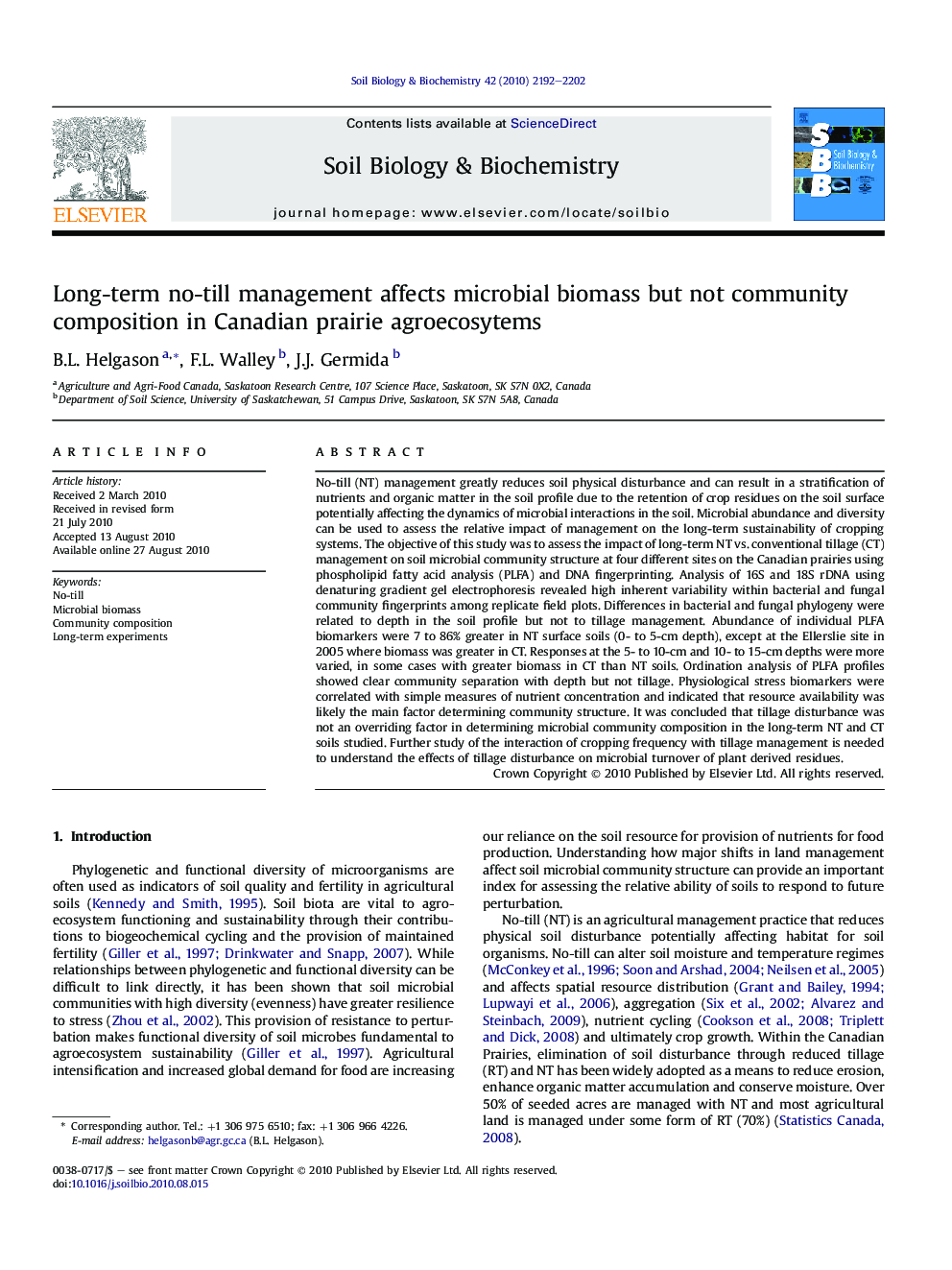| Article ID | Journal | Published Year | Pages | File Type |
|---|---|---|---|---|
| 2025373 | Soil Biology and Biochemistry | 2010 | 11 Pages |
No-till (NT) management greatly reduces soil physical disturbance and can result in a stratification of nutrients and organic matter in the soil profile due to the retention of crop residues on the soil surface potentially affecting the dynamics of microbial interactions in the soil. Microbial abundance and diversity can be used to assess the relative impact of management on the long-term sustainability of cropping systems. The objective of this study was to assess the impact of long-term NT vs. conventional tillage (CT) management on soil microbial community structure at four different sites on the Canadian prairies using phospholipid fatty acid analysis (PLFA) and DNA fingerprinting. Analysis of 16S and 18S rDNA using denaturing gradient gel electrophoresis revealed high inherent variability within bacterial and fungal community fingerprints among replicate field plots. Differences in bacterial and fungal phylogeny were related to depth in the soil profile but not to tillage management. Abundance of individual PLFA biomarkers were 7 to 86% greater in NT surface soils (0- to 5-cm depth), except at the Ellerslie site in 2005 where biomass was greater in CT. Responses at the 5- to 10-cm and 10- to 15-cm depths were more varied, in some cases with greater biomass in CT than NT soils. Ordination analysis of PLFA profiles showed clear community separation with depth but not tillage. Physiological stress biomarkers were correlated with simple measures of nutrient concentration and indicated that resource availability was likely the main factor determining community structure. It was concluded that tillage disturbance was not an overriding factor in determining microbial community composition in the long-term NT and CT soils studied. Further study of the interaction of cropping frequency with tillage management is needed to understand the effects of tillage disturbance on microbial turnover of plant derived residues.
